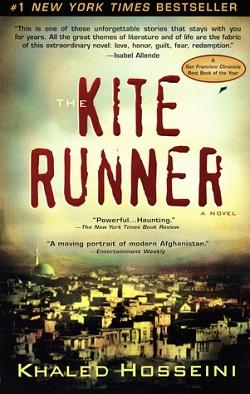“He spoke freely about Arthur Langner and Ron Wheeler and Chad Gordon. And about you, Mr. Kent. Clearly, you five men worked closely. I am sure you know what Hull 44 means.”
“I told you. I do not know what you are talking about.”
Bell regarded him coldly. Kent looked away from his stern face.
“ ‘Hull 44,’ ” the detective said, “were your friend’s dying words. He would have told me what it meant if he had not died. Now it’s up to you.”
“I can’t-I don’t know.”
Bell’s features hardened until they looked like they had been cut from stone. “That powerful man held my hand like a child and tried to tell me why he was murdered. He could not get the words out. You can. Tell me! ”
Kent bolted into the hallway and yelled loudly for the sentries.
Six U.S. Marines escorted Bell out the gates, their sergeant polite but unmoved by Bell’s pass. “I recommend, sir, that you telephone for an appointment with the commandant of the yard.”
Scully was waiting in the lunchroom. “Have yourself some supper. It’s a swell grub station. I’ll watch for Kent.”
“I’ll spell you in fifteen minutes.”
Bell could not remember when he had last eaten. He was just raising a sandwich from his plate when Scully dashed back and motioned him to the door. “Kent broke from the gate like the favorite at the Kentucky Derby. Heading east on Sand. Wearing a tall-crowned black derby and a tan topcoat.”
“I see him.”
“That’s the direction of the Hotel St. George. Looks like the lady’s back in town. I’ll cut over to the St. George on Nassau in case you lose him.” Without waiting for Bell’s response, the independent Scully disappeared around the corner.
Bell followed Kent. He lay back half a block, screened by the crowds pouring in and out of the saloons and eateries, and passengers hopping on and off streetcars. The naval architect’s tall bowler was easy to track in a neighborhood where most men wore cloth caps. His tan coat stood out among dark coats and pea jackets.
Sand Street passed through a district of factories and storehouses on its route between the navy yard and the Brooklyn Bridge. The damp evening chill carried the scents of chocolate, roasting coffee, coal smoke, harbor salt, and the sharp, pungent aroma of electrical shorts sparking from the trolley wires. Bell saw enough saloons and gambling halls to rival San Francisco’s “Barbary Coast.”
Kent surprised him at the enormous Sand Street Station where streetcars, elevated railway trains, and a trolley line under construction converged on the Brooklyn Bridge. Instead of passing under the station and continuing on to the Heights and the Hotel St. George, the naval architect suddenly darted through an opening in the stone wall that supported a ramp to the Brooklyn Bridge and hurried up the stairs. Bell dodged a trolley and tore after him. Hordes of people were streaming down the steps, blocking his view. He pushed his way to the top. There he caught sight of Farley Kent walking toward Manhattan on the wooden promenade in the center of the bridge. So much for a lady at the Hotel St. George.
The wooden walkway was flanked by elevated rail and trolley tracks and crowded with an evening rush of men walking home from work in Manhattan. Trains and streetcars hurtled past. They were packed with humanity, and Bell-who had spent many years tracking criminals on horseback in the open spaces of the West-understood those who preferred to walk in the cold, even assaulted by the constant shriek and rumble of train wheels.
Kent shot a glance over his shoulder. Bell removed his distinctive broad-brimmed white hat and moved side to side to be shielded by the crowds. His quarry hurried against the foot traffic, head down, staring at the boards and ignoring the dramatic panorama of New York’s skyscraper lights and the twinkling carpet of red, green, and white lanterns shown by the tugboats, schooners, steamers, and ferries plying the East River two hundred feet under the bridge.
The stairs on the Manhattan side led down to the City Hall district. The instant Kent hit the pavement he spun on his heel and hurried back toward the river he had just crossed. Bell followed, wondering what Kent was up to as they neared the waterfront. South Street, which passed under the bridge and paralleled the East River, was bordered by a forest of ship masts and bowsprits. Finger piers and warehouses thrust into the stream, forming slips in which moored three-masted sailing ships, tall-funneled steamers, and railroad barges.
Kent turned uptown, away from the Brooklyn Bridge. He hurried for several blocks, walking fast, not bothering to look back. When he reached Catherine Slip, he turned toward the water. Bell saw trading vessels rafted side by side. Deck cranes swung pallets of freight from ship to shore. Longshoremen trundled them into the warehouses. Kent passed the ships and headed for a long and unusually narrow steam yacht, which had not been visible from South Street.
Bell observed from the corner of a warehouse. The narrow yacht, which was fully one hundred feet long, had a sleek knife blade of a steel hull painted white, a tall steering bridge amidships, and a tall smokestack aft. Despite its businesslike appearance, it was luxuriously finished with brass fittings and varnished mahogany. Moored incongruously among the grimy trading vessels, it was, Bell thought, well hidden.
Farley Kent dashed up a gangway. Lighted portholes gleamed from the low cabin. Farley Kent pounded on the door. It opened, spilling light, and he disappeared inside and yanked it shut. Bell followed immediately. He put his hat on his head and crossed the pier with quick, firm strides. A deckhand on one of the trading vessels noticed. Bell gave him a grim stare and a dismissive nod, and the man looked away. Bell confirmed that the yacht’s decks were still empty of sailors, stepped quietly across the gangway, and pressed his back to the bulkhead that formed the cabin.
Removing his hat again, he peered in a porthole cracked open for ventilation.
The cabin was small but luxurious. Brass ship lamps cast a warm glow on mahogany paneling. In a swift glance, Bell took in a sideboard with crystal glasses and decanters secured in racks, a dining table set within a horseshoe banquette with green leather upholstery, and a voice pipe for communicating throughout the vessel. Hanging over the table was a Henry Reuterdahl oil painting of the Great White Fleet.
Kent was shrugging out of his coat. Watching him was a short, stocky, athletic-looking Navy officer with an erect posture, a puffed-out chest, and a captain’s bars on his shoulder boards. Bell could not see his face, but he could hear Kent shout, “Damned detective. He knew exactly what to ask.”
“What did you tell him?” the captain asked calmly.
“Nothing. I had him thrown out of the yard. Impertinent busybody.”
“Did it occur to you that his visit concerned Alasdair MacDonald?”
“I didn’t know what the hell to think. He gave me a case of the rattles.”
The captain seized a bottle from the sideboard and poured a generous glass. As he thrust it at Kent, Bell finally saw his face-a youthful, vigorous face that ten years ago had been splashed reverently on every newspaper and magazine in the nation. His exploits in the Spanish-American War had rivaled those of Teddy Roosevelt’s Rough Riders for coolheaded bravery.















